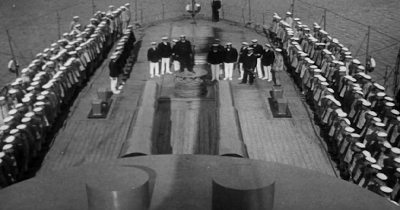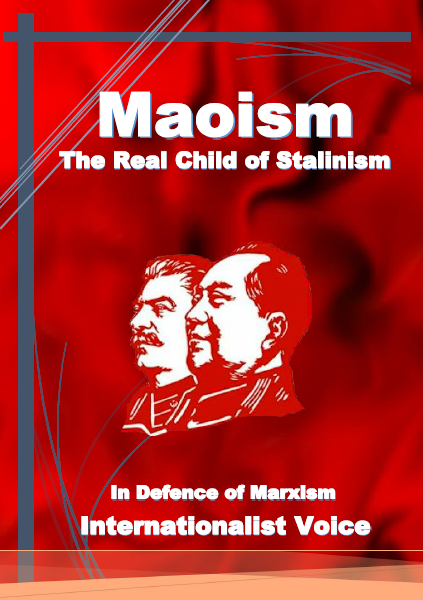8 March – The emancipation of women is only possible in a communist society
The 8th of March is coming and different tendencies and bourgeois groups, especially the left of capital, are preparing themselves to commemorate this day, under the title of a celebration of International Women’s Day. Just like the first of May, the International Day of Workers, the eighth of March has been emptied of its class content and has become a ceremonial feast and an instrument of democratic institutions in the service of the state of capital, at odds with the class struggle. This day is so embedded in the capital that the nest of thieves (UN) in 1977 recognized the International Women’s Day, and through a resolution invited its member states to observe this day as a celebration of “Women’s Rights and International Peace”.
International Women’s Day is rooted in the movement of the working class and in the bloody struggle of the proletariat. On the eighth of March, 1857, American female textile workers staged protests against low wages and excruciating working conditions. The police brutally suppressed the working women’s protests, which led to a number of people being injured and arrested. Years later, on 8 March 1907 American female textile workers again staged protests, this time to demand a 10-hour working day, which again was met with brutal repression by the police of the bourgeoisie. Since then the workers began protests with demands for “women’s suffrage” and the prohibition of child labour.
Gradually this day became a day of struggle for improved working conditions and social rights of the working class with the bourgeoisie. In 1910, in the second international congress of Socialists, Clara Zetkin proposed International Women’s Day, which was approved by congress. With the start of the imperialist war (World War I), millions of men were sent to war as cannon fodder, which led to the formation of the anti-war movement and in particular with the women workers. In this respect, women workers of Tsarist Russia and in particular the textile workers of Petrograd played a decisive role. On the eighth of March 1917 female textile workers in Petrograd went on strike and, demanding “bread and peace”, conquered the streets. This is actually known as the spark of the Russian revolution.
In 1913, women were demanding the right to vote, and they fought for this right, and with the end of World War I the bourgeoisie awarded the franchise to women, especially in industrialized countries such as Germany, Great Britain, the United States of America etc. The reason of this was not the kindness of the bourgeoisie, but rather the fact that the bourgeoisie itself was aware that World War I had opened a new chapter in history, capitalism entered the period of decline and, as the Communist International declared in 1919, the era of “War and Revolution” had begun. Parliament had lost its revolutionary content, and electoral shows and the parliamentary circus would only strengthen democratic illusions.
So the bourgeoisie, in line with its own interests and in order to counter the communist revolution, began to strengthen democratic illusions, and it remains true that the left of capital plays an important role in this regard.
Since the beginning of the 1970s a movement called feminism began to grow that considered and still considers men, and not capitalism, as the root of women’s oppression. Feminism with any suffix (socialist, revolutionary, etc.) is a reactionary ideology and has nothing to do with the labour movement and its traditions. According to feminist ideology, Margaret Thatcher, Hillary Clinton, Angela Merkel and the other bourgeois women are placed beside of millions of female workers, millions of wage slaves. The world of the working woman is alien to the world of the bourgeois woman. The world of the working woman is double exploitation, double oppression, humiliation, inferiority, beaten down anger, choked back tears – in a word a terrestrial and real hell that the upside down capitalism provides for humanity.
Apart from some who play a role as organizers of the exploitation of the proletarian class, bourgeois women actually had no role in social production, and literally have a parasite life, squandering the surplus value (blood of workers) that their husbands have stolen.
Bourgeois women always have to defend the exploitation of women workers. When they are placed in power they use the same bourgeois policies that their male colleagues already employed. “The Iron Lady” of Great Britain, Margaret Thatcher, has become synonymous with the closure of tens of mines and the layoffs, unemployment and homelessness of thousands of workers. The “gentle spirit” of this criminal can be measured in terms of her handling of the demands of the prisoners of the Northern Ireland Republican Army, in that she was witness to the gradual and repeated deaths of prisoners on hunger strike, without accepting their basic demands, including the recognition of the prisoners of the Northern Ireland Republican Army as political prisoners and not as criminals. Hundreds of thousands of Iraqi soldiers (in fact, workers in military uniforms) were killed in the first Gulf War under the politics of Thatcherism.
The history of the working class is filled with the most humane class solidarity of the working class women. The women of the working class are recorded as fighting the most ardent battle in the history of the working class, because their conditions have sometimes been more at risk than those of the men of the working class. Whilst in the general bourgeois culture a woman’s status is assessed only in the service of men, the working class has provided thousands of its brightest stars. Rosa Luxemburg, Clara Zetkin, Alexandra Kollontai and others are just a few examples. Alexandra Kollontai became the first female minister in the history of mankind after the October Revolution. At this time, the bourgeoisie did not even vote for women. Rosa Luxemburg is still a source of inspiration for the proletariat. The teachings of this prominent theoretician of the working class is still a guiding light not only for female workers but also for men of the working class in their battles.
The root of the oppression of women is not the oppressive characteristics of men – it is rather rooted in the class system and capitalist relations of production. Only with the elimination of all material aspects of the capitalist relations of production and wage slavery system will this oppression also disappear. Working women and working men, arm in arm like a united body, as a class, must, through their class battle, not only emancipate their own lives but also to put an end to bourgeois women’s parasitism, and create a life worthy of humanity. The only horizon ahead of the working class is the class struggle and the real emancipation of women is possible in the classless society of communism.
Firoz Akbary
28 February 2012
DOWNLOAD AZ PDF















